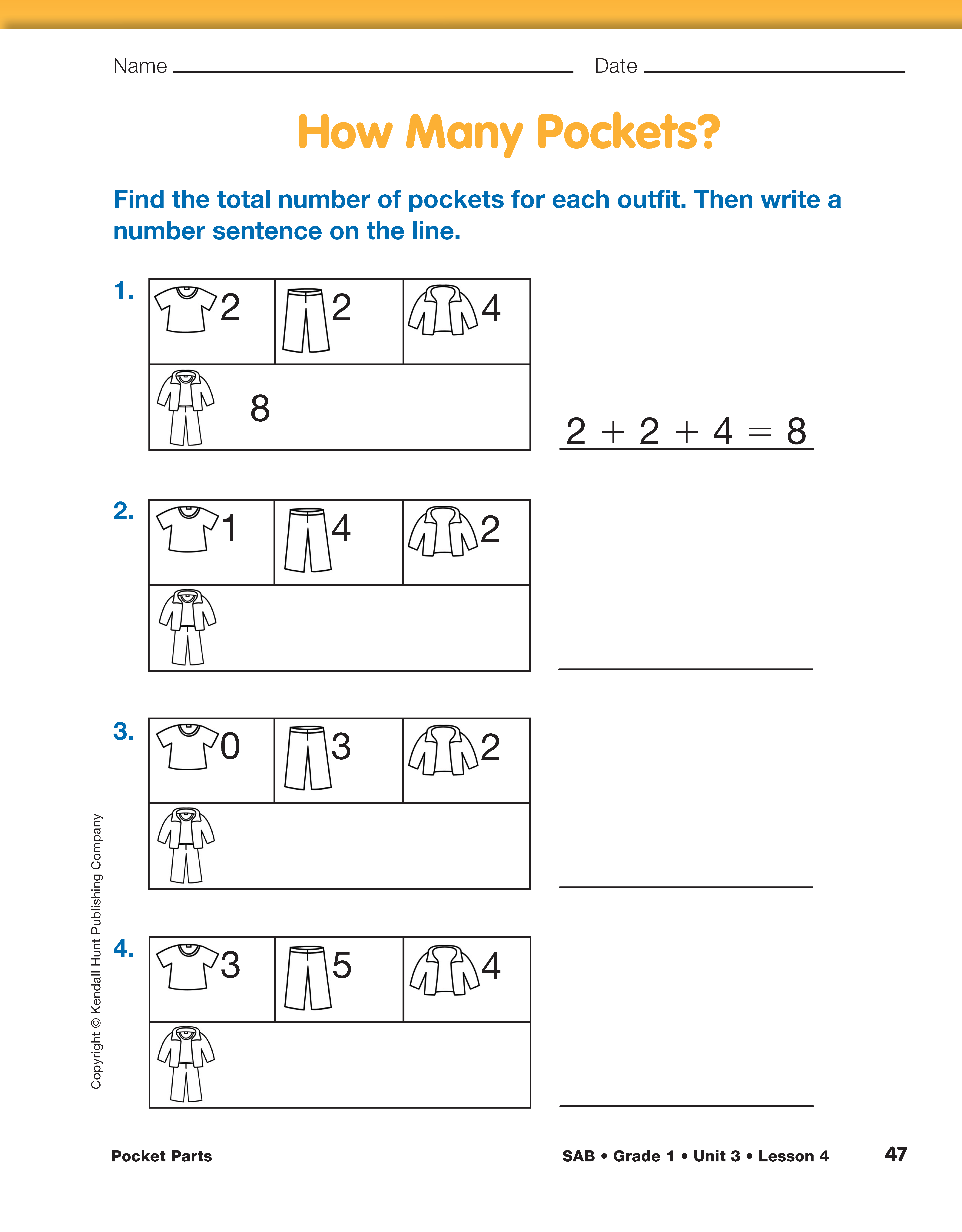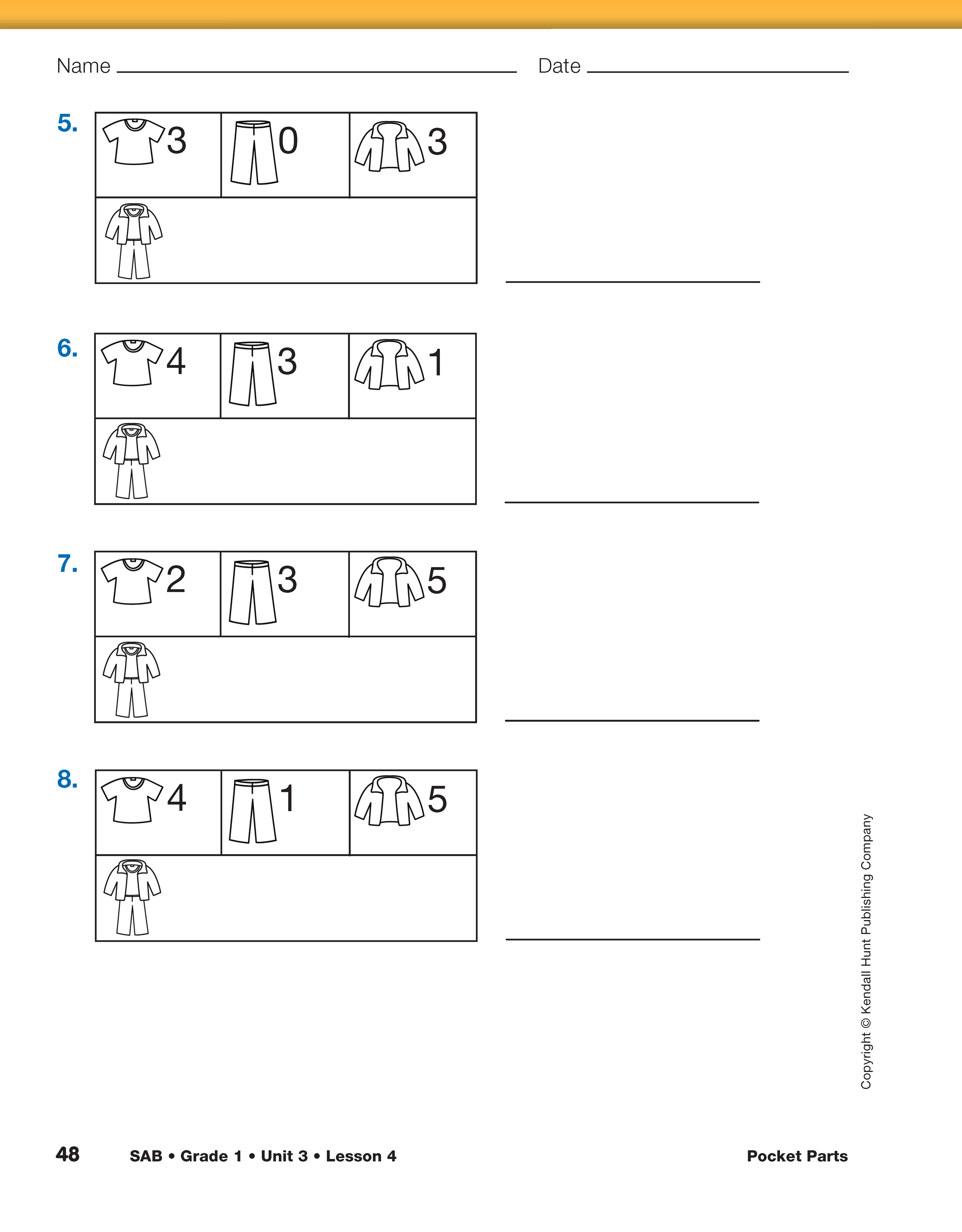Pocket Parts
Est. Class Sessions: 2Developing the Lesson
Part 2: Combining Three Parts and Finding the Whole
Use the Shirts, Pants, and Coat Pockets Master to create and display problems for the class involving three addends.
Display a problem similar to the following and discuss:
Identify a variety of strategies and tools (e.g., number line, connecting cubes, and ten frames) students are using and identify students to share these strategies with the class. Display and refer students to the Math Practices page in the Student Activity Book Reference section. Direct students to Math Practices Expectation 5, Show my work. Ask the identified students to demonstrate and explain their solution strategy for this problem. Display the number sentence for the three addends and the solution to this problem. Redirect the discussion as needed to encourage students to use the counting-on strategy. See Sample Dialog 2.
Pose and discuss several other problems. Encourage students to use the counting-on strategy when appropriate rather than counting from one. Write number sentences to represent each solution.
After several examples, ask students to complete the How Many Pockets? pages in the Student Activity Book. Circulate among students while listening to their solution strategies. After they have completed all the problems, ask each student to choose one problem to explain to their partner. Students should take turns describing what they did to solve the problem. These rehearsals help students clarify their thinking and become better at explaining their strategy.

















